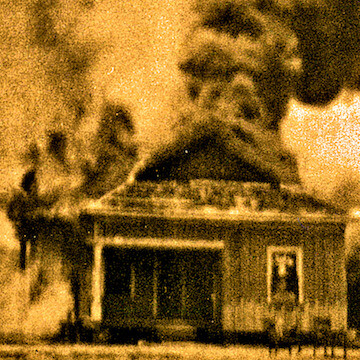
What you need to know about the Tulsa Race Riot
- What actually went on in Tulsa?
- What happened next?
- What was everyday life like in Tulsa during the segregation?
- Why did they start the excavations?
- Why is the exhumation so necessary?
- 1
What actually went on in Tulsa?
Recently officials in Tulsa, Oklahoma announced they had discovered the remains of possible victims of a race riot almost a hundred years ago.
Researchers are searching the ground around Tulsa looking for the remains of the victims of the massacre.
For decades the topic of the riot was taboo for Oklahoma residents. It was erased from the history books and ignored by publishers.
Almost 100 years ago, the city of Tulsa was soaked in blood, and fire raged, as angry white mobs slaughtered hundreds of black residents. Police and National Guards took the side of the white rioters. The racial hatred burst out after a young black man - later proven innocent - was accused of sexually assaulting a white woman.
- 2
What happened next?
The confrontation started between the white mob and armed Black Tulsans who tried to protect the defendant from being lynched. To some estimates, up to 300 people were slaughtered during the unrest.
More than 10,000 people were estimated to be left without a roof. Those who survived were accused of starting the unrest and left on the street, with no compensation for the destroyed property. More than 35 square blocks of the once-prosperous business district, including more than 1,200 businesses, were destroyed.
According to some historians, city officials then put survivors into “concentration camps”, and prevented many Black people from burying their loved ones. Survivors recounted seeing countless bodies of Black people, piled in trains, floating through the Arkansas River, and buried in mass graves.
- 3
What was everyday life like in Tulsa during the segregation?
African American residents in Tulsa, Oklahoma kept a self-sustaining black community, called Greenwood. It was lined with thriving businesses in the era of the Ku Klux Klan. The neighborhood was dubbed a ‘Black wall street’ and it was among the wealthiest U.S. black communities. Greenwood had its own theatre, restaurants, newspapers, a hospital, and a 54 room grand hotel. By the end of the bloodbath on June 1, 1921, Greenwood was burned to the ground.
- 4
Why did they start the excavations?
The possible mass graves were pinpointed in early 2000 during the first archaeological investigation sponsored by the state. The forgotten tragedy was uncovered thanks to testimonies from witnesses and survivors of the massacre.
The research ended without a physical inspection of possible gravesites. It was reopened in 2018 after Tulsa’s Mayor G.T. Bynum vowed to finish the investigation and initiated ground-penetrating radar searches for possible mass graves. But no human remains have been found for months. Just recently Tulsa officials said at least 12 wooden coffins were uncovered in a city-owned cemetery. - 5
Why is the exhumation so necessary?
Raising awareness of the Tulsa Race Riot is on the agenda of the Tulsa mayor’s office. Local officials have started an art project which has received a $1 million grant from Bloomberg Philanthropies and $200,000 from the George Kaiser family. At least 22 US-based writers will contribute essays for the catalogue representing 34 public art projects in 2021, as part of the centenary commemoration of the 1921 Tulsa race massacre.
The local Gilcrease Museum has received a $300 000 grant to conserve and digitise the ephemera collection “so that these atrocities would not be forgotten.” Decades on, the race riot is a more comfortable truth in Tulsa. However, residents accuse officials of turning what remains of the ‘Black Wall Street’ into a tourist destination. “It’s so much more than a tourist site — it’s a crime scene,” says the Rev. Dr Robert Turner of the African Methodist Episcopal Church in Tulsa. “Until Tulsa does right by Greenwood, this district will forever be a crime scene,” he told The New York Times.



